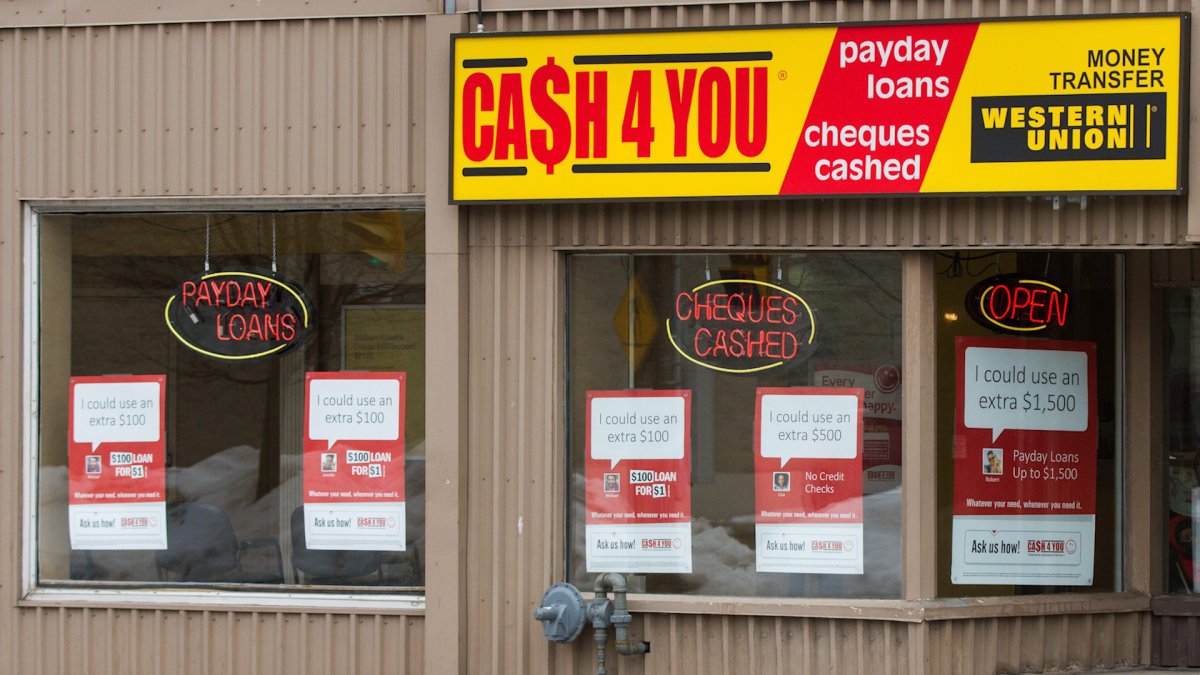Young Canadians are increasingly becoming insolvent on their debt, data and anecdotal evidence shows.

In Ontario, those under the age of 30 now make up 14 per cent of insolvent debtors in the province, according to a survey released today by Hoyes, Michalos and Associates, a Kitchener, Ont.-based licensed insolvency trustee firm.
READ MORE: Can’t afford to pay your tax bill? Here’s what you can do
The share of those who file for protection from creditors via a consumer proposal or bankruptcy has declined to a 15-year low in the province, according to the study. But people ages 18 to 29 are among the groups witnessing the opposite trend. Insolvency rates for Ontarians under 30 increased from 12 per cent to 14 per cent between 2015 and 2016, the survey found.
The phenomenon is hardly unique to Ontario. “I don’t have hard data, but anecdotally we’ve seen an increase in the number of millennials filing for insolvency,” Bruce Caplan, senior vice president at credit-counselling firm BDO Canada, told Global News.
WATCH BELOW: Why paying only the minimum on your credit card statement won’t work

Millennials in Manitoba seemed to be particularly affected by the oil-patch crisis, he said, but the recession doesn’t appear to be the main driver of the increase in insolvency filings by younger Canadians, who are often financially “overextended,” said Caplan.
Across Canada’s provinces, the share of insolvent debtors under 30 hovered around 10 per cent in 2015, according to data from Statistics Canada.
So what’s driving younger Canadians into debt they can’t keep up with?
Student debt
According to Hoyes, Michalos and Associates, which conducted the Ontario survey, almost one-third of millennials who become insolvent carry student debt.
Canadians’ student debt levels may pale in comparison to what U.S. graduates are facing, but the load is nonetheless substantial — and potentially unmanageable for those who struggle to find employment or well-paying jobs.
WATCH BELOW: Keeping student debt under control

In 2015, the average student debt stood at $13,331 in Canada, according to the Canadian University Survey Consortium. But when you exclude from the headcount students lucky enough to have no debt, the average load doubled to $26,819.
READ MORE: Ottawa writing off $178M in student loans
Payday loans
But if student debt is a factor driving some young Canadians into bankruptcy, payday loans may be an even bigger drag toward the financial black hole.
According to the Ontario study, a whopping 38 per cent of millennials who became insolvent last year have payday loans, which allow cash-strapped borrowers to access small amounts of money that they will have to repay, along with a high interest rate, when their next paycheque comes in.
Last year, a British study found that those born between 1982 and 2004 were twice as likely as baby boomers to take out a payday loan.
WATCH BELOW: Huge price to pay for payday loans
It’s an ironic twist for a generation that notoriously views credit card debt with suspicion, possibly because their parents aren’t shy in pulling out the plastic.
But with increased scrutiny of borrowers and less time to build up a credit history, millennials are nearly 20 per cent more likely to have a poor or very poor credit score than generation X and almost 60 per cent more likely than baby boomers, according to the British research.
And with few options to access cheap credit, the lure of payday loans increases.
However, Caplan, of BDO Canada, said payday loans didn’t seem to be a major reason behind millennial insolvencies in Manitoba. Unsustainable amounts of unsecured debt like credit cards and lines of credit are a more frequent trait of young debtors in the province, he noted.
READ MORE: Canadian millennials most likely targets for fraud: survey
Income inequality
Income inequality is another driver of insolvencies among Canadians of all ages, according to the Ontario survey.
The typical insolvent person in Ontario resorts to debt to “make up for a lower-than-average, intermittent or stagnating income,” Ted Michalos, co-founder of Hoyes Michalos said in a statement. Ontarians who filed for insolvency have an average of $302 left each month to repay their debt and face $960 a month in interest alone.
Almost two-thirds of insolvent Ontarians earn incomes that rank in the bottom 20 per cent of household earnings in the province, the study noted.
READ MORE: The 8 richest people in the world: All men, mostly American
Overall, it doesn’t seem that millennials as a group are particularly vulnerable to income inequality. Household incomes for Canadians aged 25 to 35 have risen at a healthy clip since 2000, although the pace has slowed after the financial crisis, according to research by TD Economics.
“As of 2012, Canadian millennials had accumulated almost double the amount of net wealth as generation X had attained at their age,” wrote TD economists Beata Caranci and Diana Petramala.
But as the divide between high and low incomes widens in Canada and other advanced economies, some millennials are finding themselves at the bottom of the earnings ladder.
READ MORE: 2 richest businessmen hold same wealth as 11 million Canadians: Oxfam report
What millennials and others facing out-of-control debt can do
Canadians — millenial or otherwise — who struggle financially can take several steps to get out of the cycle of debt, said Doug Hoyes, the other co-founder of Hoyes Michalos. Here are some tips:
- As soon as you get into debt, come up with a repayment plan. You should plan on paying more than the minimum payment and set a goal of paying down your balance as soon as possible, according to Hoyes Michalos.
- Try to avoid resorting to debt for day-to-day expenses by building a small emergency fund. “Even having a small savings amount can reduce the risk that you will be forced to turn to debt to pay for necessities,” the authors of the Ontario study noted.
- Never use payday loans or other predatory lending. You’ll get the cash you need, but you’re just postponing your cash-flow problem until the next paycheque and digging yourself into expensive debt at the same time.
- Speak to a licensed insolvency trustee. If you’re using debt to repay debt, a trustee can help you draft a consumer proposal or file for bankruptcy, in extreme cases. Both options give you relief from creditors, but proposals entail paying some of what you owe, and generally allow you to keep your assets, including your house. Bankruptcy absolves you of many debt charges but normally forces you to sell your assets, with some exceptions.
WATCH BELOW: Licensed Bankruptcy and Proposal Trustee Freida Richer on Global News Morning with some tips to tackling debt.













Comments